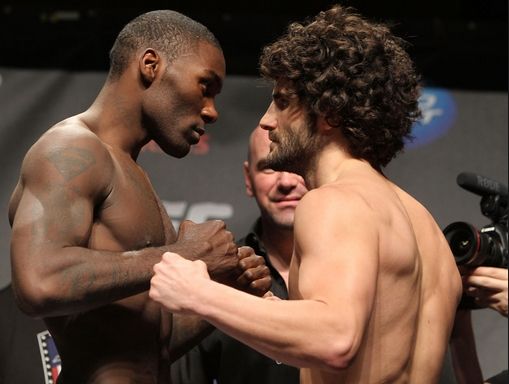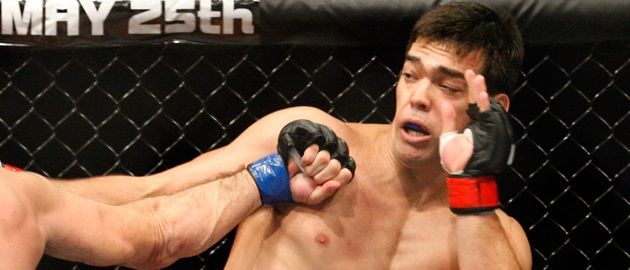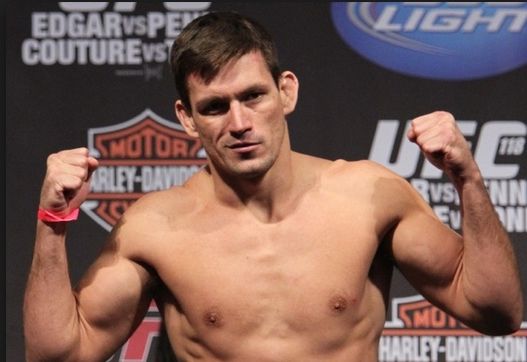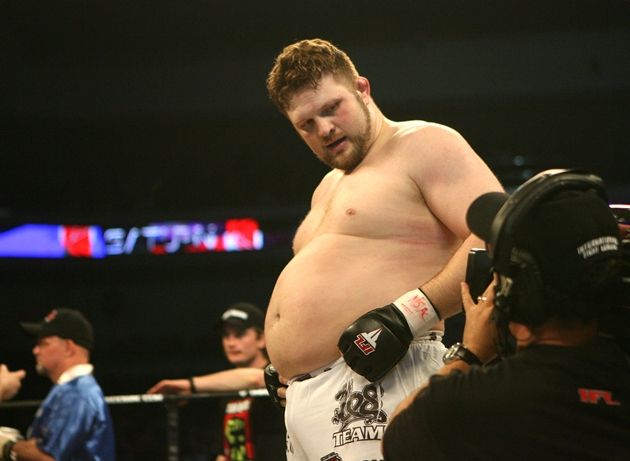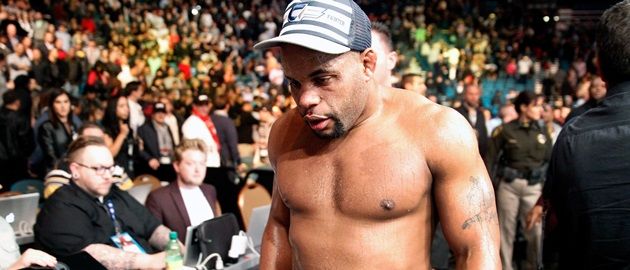It’s crazy to think that just over three years ago, Anthony Johnson was knocking out Charlie Brenneman (a true lightweight) and now he’s set to contest Jon Jones’ light heavyweight belt.
What’s even crazier is that, between the 2011 Brenneman bout and the inevitable championship meeting with “Bones,” Anthony Johnson actually made the step up to the heavyweight division to take on MMA legend Andrei Arlovski.
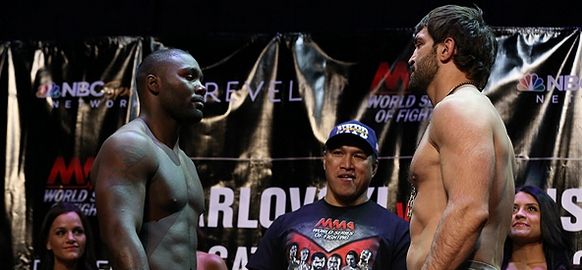
“Rumble” has sampled every weight division between 170lbs and 265lbs and has had mixed results in each, except for the one in which he currently competes as, at 205lbs, he has been literally unstoppable.
It’s a problem that almost every fighter deals with, the issue of finding the right weight class for your body type.
And Anthony Johnson is the go-to reference for fight pundits when this issue arises.
How did the behemoth who is knocking out one of the finest light heavyweights walking the earth last night get choked out by Josh Koscheck in 2009?
The answer lies purely with the weight cut and how much of your power, speed, alertness and cardio you’re sacrificing by purposely draining your body to the point of near-failure.
Before he started his run at 205lbs, Johnson was a running joke in the MMA community when he began missing weight more often than making it.
But in his current incarnation, it makes you wonder how much sooner “Rumble” could have reached the pinnacle of his sport if he had just figured out his proper weight class when he started fighting professionally.
Would he have had a world title by now if he was fighting at 205lbs from the get-go? Maybe. Would he have earned a title shot by now? Almost certainly.
Presumably he thought ‘OK, I’m a light heavyweight but imagine the damage I could do to 170lbers with my 205lb power,’ and made the decision to drop down.
And (more presuming here) that would mean Johnson would have spent the vast majority of his fight camps focusing on the weight cut when he could have been doing that extra bit of drilling or sparring or just honing his technique.
I want to make it clear that this isn’t an argument against weight-cutting because that’s just a part of the fight game but, rather, this is an argument for finding the balance and making sure you figure out the weight division in which you can perform best before it’s too late.
The amount of fighters who, just by looking at them, you can tell are in the wrong division is staggering and it makes you wonder what they could have done if they remedied that problem sooner.
Lyoto Machida is one name who jumps to mind straight away. Granted, he won the light heavyweight championship in 2009 but he lost that less than a year later and never looked to be able to regain it.
He was one of few fighters who would literally cut no weight back when he fought at 205lbs and would regularly come in under the weight limit but that proved to be a massive disadvantage when he took on fighters like Jon Jones who would walk around twenty pounds heavier come fight night.
Since his drop to middleweight he has gone 3-1 with his only loss coming to the champion Chris Weidman but, when you look at the improved speed and movement that “The Dragon” has since he moved down to 185lbs, it makes you wonder what kind of damage he could have done to the division if he had dropped down sooner.
Machida’s fellow countryman Demian Maia is another great example of a competitor who took far too long to realise that he was at a massive disadvantage in his current weight class before he dropped down to welterweight in 2012.
Maia’s game is massively based around the grappling department with 9 of his 19 wins coming by way of submission.
The problem for the Jiu-Jitsu black belt at middleweight was that he simply didn’t have the strength to be able to muscle around some of the beasts he was facing, like Chris Weidman or Mark Munoz.
The 170lb division is much more conducive to his frame and he went 3-0 directly after his drop before losing two decisions to tough contenders Jake Shields and Rory MacDonald but he looks to have gotten back on track in his last fight when he overcame Alexander Yakovlev.
It’s hard to make a case for Roy Nelson being in the wrong weight class when you look at his, erm, frame.
Anticipating a Twitter bashing, I’m convinced that Nelson is a natural light heavyweight and the cut wouldn’t even be too much of a problem for him if he managed to rid himself of that gut.
Lately he has been weighing in at around 240lbs and that’s obviously cutting no weight. Jon Jones easily cuts 20+ pounds every time he fights so for a fighter like “Big Country,” that cut is no big deal.
I don’t think his knockout power would have diminished much at 205, nor do I see how being in better condition cardio-wise would be a bad thing for Nelson.
The sad thing is that, at 38, the ship has probably sailed on Roy making the cut and giving a run at the light heavyweight belt a go and it’s terribly frustrating to think of what he could have provided to that division if he had looked after himself a bit better in his late 20s.
Daniel Cormier is a newer name to consider and he is an example of what Roy Nelson could have done if he had applied himself.
It’s been less than a year since “D.C.” made the drop down from heavyweight to his more natural weight class of light heavyweight.
Cormier has to be applauded for making the decision before a vicious knockout loss made it for him.
He was dominating proceedings in his two UFC heavyweight outings against Nelson and Frank Mir but knew in his heart that things could go badly wrong if he faced a true heavyweight powerhouse like “Bigfoot” Silva.
He made the drop with little bother and was just as dominant at 205lbs, beating out Pat Cummins and bossing Dan Henderson before coming unstuck in his title shot against Jon Jones.
But the fact that Cormier is 35 now would suggest that he’ll struggle to get another run at the title so the point has to be made that his MMA career should have started at light heavyweight which would have given him ample time to adapt to the weight class before making one or two championship runs.
For the fans of the lighter guys, Frankie Edgar was never a true lightweight.
Despite holding the title for two years at 155lbs, the New Jersey fighter was far too undersized when he came up against fighters like Benson Henderson.
10 lbs might not sound like a lot but in the fight game that can mean everything and “The Answer” looks a hell of a lot better since he dropped to featherweight.
The argument could be made that if the lighter weight divisions existed back when Frankie was in his twenties that bantamweight could be his best weight division but we could just be getting carried away.

That’s just five guys who have arguably left it just a little too late to find their true weight class and it might affect all of their legacies when the time comes for them all to hang up their gloves for the last time.
This argument is not to say that it’s too late for these fighters to win a world title and dominate for another year or two before they retire but they’re all in their 30s now and, for a fight fan, it’s really heartbreaking to think of the “what ifs” when fighters like this just can’t see that their weight class is not right for them.
Johnson might have the chance for world glory in his next bout as he meets Jon Jones for the light heavyweight crown but that nagging hindsight will always remain for a fighter who spent six years fighting in the wrong division.
So for the younger fighters, don’t wait around until it’s too late. Figure out your weight division early in your career and don’t be too stubborn to realise that you’re too small or too big for a division. It’ll pay dividends. Trust me, I’m a journalist.

